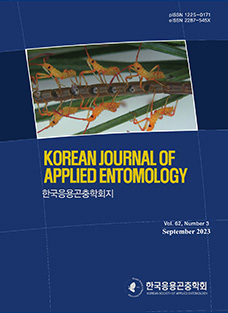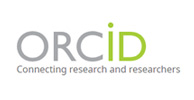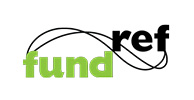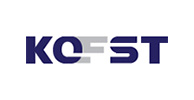생물학에서 온도와 발육관계의 관계는 오래전부터 관심사중의 하나이었다. 이미 1735년 Réaumur (1683-1757, 프랑스 곤충학자)는 일별평균온도의 합을 생물성장에 이용하는 방법을 생각하였다(Réaumur, 1735;Blehrádek, 1935;AMS, 2012). 그 후 임계온도의 개념을 도입하여 곤충의 발육에 필요한 온량(즉 온량상수 thermal constant)을 추정하였고(Blunk, 1923;Bodenheimer, 1924;Lin et al., 1954), 온도와 곤충 발육률(발육속도) 간의 관계를 정량적인 선형모형으로 완성하였다(Arnold, 1959;Campbell et al., 1974).
온도에 따른 곤충발육은 선형모형 만으로는 다 설명되지 않는다. 온도의 증가에 따라 발육률은 증가하지만 최고점에 도달한 후 다시 감소하는 비대칭적이며 비선형적인 형태를 보인다 (Fig. 1). Kim et al. (2017)은 온도에 따른 곤충의 발육구간을 저온, 적온 및 고온영역으로 구분하고 그 특성을 정리한 바 있다. 즉 최적온도(optimal temperature, To)는 발육률이 최고점에 도달하는 온도라고 정의하고, 그 이하 및 이상의 온도를 각각 최적 하부온도(suboptimal temperature) 및 최적상부온도(hyperoptimal temperature)라고 하였다. 후자는 고온영역(high temperature region)에 해당되며 고온저해(high temperature inhibition)가 일어나서 온도의 증가에 따라 발육률이 감소되고, 결국 사망에 이르는 고온한계온도(상한임계온도 = high threshold temperature)에 도달한다. 최적하부온도는 중부온도영역(intermediate temperature region)과 저온영역(low temperature region)으로 구분하였는데, 전자는 온도와 발육률 간 선형관계를 보이는 구간이고 최적하부온도에서 저온영역은 온도가 감소함에 따라 저온저해(low temperature inhibition)로 발육률이 다시 비선형적으로 변할 수 있는 구간을 뜻한다.
일반적으로 저온영역에서는 저온저해로 발육률이 더 크게 감소하여 Fig.1과 같이 x-축으로 급히 떨어지거나, 서서히 감소하여 저온한계온도(하한임계온도 = low threshold temperature) 부분까지 ‘0’에 점근하는 형태를 갖게 되지만(Kim et al., 2017), 본 연구에서는 발육영점온도(developmental zero temperature) 를 하한임계온도(lower threshold temperature)와 동일하게 취급하였다. 또한 상한임계온도(upper threshold temperature)를 발육률이 최고에 도달하는 온도로 정의하는 경우도 있으나(Wilson and Barnett, 1983), 고온영역에서 발육이 정지되는 온도로 취급하였다(Fig. 1).
단순 회귀식 즉 y=ax+b(y=발육률, x=온도)로 수식화되는 선형모형은 중요한 두 개의 온도관련 기계적 매개변수인 하한 임계온도(-b/a)와 온량상수(1/a)를 포함하고 있다(Campbell et al., 1974). 선형모형을 이용한 해충발생 예측기술을 적산온도 예측모형이라 부르며, 일유효온도(daily effective temperature) 즉 하루(day) 동안 발육하한임계온도 이상 온도의 양(일도 = degree day, DD)을 누적하는 적산온도를 사용한다. 적산온도가 온량상수에 도달하였을 때 어떤 해충의 발육이 완료된 것으로 판단한다. 적산온도 모형은 계산이 간단하면서도 방제시기 결정측면에서 비교적 정확도가 높고 쉬운 수식이 사용되기 때문에 자주 이용되었다(Obrycki and Tauber, 1981;Higley et al., 1986). 하지만 적산온도 모형은 온도와 발육률 간 관계가 선형적인 중위온도영역에서의 직선식을 바탕으로 하기 때문에 저온 영역에서는 실제 발육을 과소평가할 수 있고, 고온영역에서는 과대평가하는 약점이 있다(Howe, 1967;Hilbert and Logan, 1983).
이러한 일유효온도 계산의 약점을 보정하기 위하여 사인곡 선법, 삼각형법 등 다양한 종류의 적산온도 계산법이 제시되었으며, 특히 고온영역 임계온도 이상에서 과대평가되는 온도를 제거하기 위하여 수평 또는 수직제거법이 적용되었다(Arnold, 1959, 1960;Lindsey and Newman, 1956;Allen, 1976;Pruess; 1983;Zalom et al., 1983;Higley et al., 1986;Raworth, 1994). 수평제거법(horizontal cutoff)은 사인곡선으로 추정된 일중온도 곡선에서 상한임계온도 이상의 온도면적을 제거하는 방법이며, 수직제거법(vertical cutoff)에서는 상한임계온도 이상에서는 발육이 정지되는 것으로 가정하고, 그 시간동안 유효온도를 ‘0’로 처리하는 방법이다.
본 연구는 기존 적산온도 계산법의 일유효온도 과대평가를 감소시키는 방법을 수립하고자 수행하였으며, 대표적인 계산법인 두 개 임계온도(하한 및 상한 임계온도) 기반의 사인곡선 수평제거법의 문제점을 분석하고, 세 개의 임계온도(하한, 최적 및 상한임계온도)를 도입하여 일유효온도 과대평가를 최소화 시킬 수 있는 새로운 대체방법을 제시하였다.
기존 사인곡선 계산법의 원리와 문제점
기존 이용하고 있는 단일 사인곡선 수평제거법 적산온도 계산방식은 두 개의 임계온도 즉 하한임계온도(TL)와 상한임계온 도(Tu)를 기준으로 일유효온도를 계산하는 방법이다(Zalom et al., 1983). 계산과정에서 상한임계온도 이상의 온도를 모두 제거하여 일유효온도의 과대평가를 감소시킨다. 이 두 임계온도 선상에서 하루 중 최저온도(Tmin)와 최고온도(Tmax)의 위치에 따라 6가지의 사례를 생각할 수 있다(Fig. 2, Table 1).
우선 하루 중 최저온도가 하한임계온도보다 낮을 때(Tmin < TL : A, B, C in Table 1)와 높거나 같을 때(Tmin ≥ TL : D, E, F in Table 1)로 구분할 수 있다.
첫 번째(A), 일중온도가 모두 발육하한임계온도 이하에 있으므로 그 날의 유효온도는 ‘0’가 된다. 두 번째(B), 일중온도가 하한임계온도에 걸쳐 있으므로 그 교점(θ1, 하부교점)을 구하여 사인곡선의 아랫부분을 일유효온도로 누적한다. 세 번째(C) 사례는 하한임계온도와 상한임계온도에 걸쳐서 일중온도가 가장 복잡하게 변동되는 경우이다. 하부교점 윗부분부터 상한임계온도와의 교점(θ2, 상부교점)까지 부분을 일유효온도로 반영하고, 상부교점 윗부분을 제거(수평제거)한다. 네 번째(D), 일중온도가 하한임계온도에서 상한임계온도 사이에 있어서 임계온도의 영향을 받지 않는 경우로 일유효온도는 Tavg-TL 값으로 근사시킨다. 다섯 번째(E) 사례는 하한임계온도 이상에서 일중온도가 형성되지만 상한임계온도 이상으로 변동되는 경우이다. 이 상황에서는 사인곡선 영역에서 상부교점 윗부분을 수평제거법의 원리에 따라 제거 시킨다. 여섯 번째(F), 일중온도가 모두 상 한임계온도 이상으로 유지되는 경우로 그 날의 일유효온도는 Tu-TL으로 계산된다.
이상 여섯 가지 사례에서 일중온도가 상한임계온도를 초과하는 C, E, F는 일유효온도의 과대평가가 심하게 나타난다.
일중온도가 하한임계온도 이하에서 상한임계온도 이상에 거쳐 변동되는 사례 C를 바탕으로 일유효온도 과대평가의 문제를 모식도를 통하여 설명할 수 있다(Fig. 3). 발육최적온도(To)를 도입하고 이들 임계온도를 기준으로 일중 온도변화를 편의상 4개 구간(a, b, c, d in Fig. 3)으로 구분하였다. 구간 a는 하한임계 온도 이하에 있는 일중온도로써 어떤 적산온도 계산방법을 적용하든지 일유효온도 계산에서 제거되는 부분이다. 발육하한 및 상한 즉 두 개의 임계온도를 적용한 사인곡선 수평제거법 (Fig. 3A)에서는 일중온도가 상한임계온도 이상일 때(즉 d 구간) 유효온도는 [Tu–TL]로 계산된다(see Fig. 2C, Table 1). 즉 상한임계온도 이상의 구간에서도 과도한 유효온도 값을 반영한다(즉 사각형 ⓦ-ⓧ-ⓨ-ⓩ 전체부분이 과대평가됨). 이 부분에서 논리적인 오류가 발생한다. 상한임계온도는 고온장해로 인하여 곤충의 발육이 멈추는 온도로 정의되기 때문에 논리적으로 유효온도는 ‘0’가 되어야 한다. 따라서 상한임계온도 이상의 온도구간에서는 유효온도를 ‘0’로 처리하는 수직제거법의 적용이 필요하다.
발육 최적온도(To)를 도입한 계산법
곤충발육과 관련된 임계온도 중에서 발육최적온도를 도입하여 적산온도를 계산하는 경우 유효온도의 과대평가를 감소시킬 수 있다. 이 때 일중온도의 구간은 하한임계온도와 상한임계온 도사이에서 b와 c로 세분화 할 수 있다(Fig. 3B, C, D). 기존 두 개 임계온도 방식(즉 하한 및 상한 임계온도 적용)의 경우 수평 제거법을 적용하더라도 구간 c 부분이 모두 반영되어 유효온도가 크게 과대평가 되고 있다는 것을 알 수 있다. 발육최적온도 적용하고 이를 기준으로 수평제거법을 반영하면 구간 c 부분이 모두 제거되어 유효온도의 과대평가를 그만큼 줄일 수 있다 (Fig. 3B: 사각형 ⓦ-ⓧ-ⓨ-ⓩ 일부분이 제거됨). 그러나 이론적으로 유효온도가 ‘0’이 되는 d 구간 온도에서 유효온도가 [TO– TL]로 계산됨으로 여전히 과대평가가 일어난다.
최적온도를 기준으로 수평제거를 시킨 다음, 상한임계온도를 초과한 온도에 대해 수직제거를 적용하면 기존 사인곡선 수평제거법에서 과대평가되었던 “사각형 ⓦ-ⓧ-ⓨ-ⓩ” 부분을 모두 제거할 수 있다(Fig. 3C). 이 개선된 접근방법은 최저온도와 최고온도의 변화곡선 상에서 하한, 최적 및 상한 등 3개 임계 온도를 이용하여 최적온도 기준 수평제거법과 상한임계온도 기준 수직제거법을 동시에 적용하는 방법으로 정의할 수 있다(즉 이중제거법).
이중제거법을 적용하더라고 유효온도의 과대평가는 완전히 해소되지 않는다. 일중온도가 발육최적온도에서 발육상한임계 온도까지 사이에서 변동할 때, 그 기간 동안의 온도는 모두 발육 최적온도로 대체하여 유효온도를 계산한다. 발육최적온도는 발육률이 최고가 되는 온도로 정의됨으로 유효온도의 최대값이 되는 온도이다. 온도가 더 증가하여 최적온도를 지나면서 발육률이 감소함으로 그 만큼 유효온도의 양은 감소하여야 한다. 그러나 여전히 [TO–TL]로 계산되어 유효온도의 최대값을 반영함으로 그 만큼 과대평가하게 되는 현상이 발생된다. 이중제거법에서 이 오차는 일중 최고온도가 최적온도와 상한임계온도 사이에 있을 때 한하여 발생하며 Fig. 3D에서 c1 및 c2 의 면적에 해당되는 부분이 된다. 그럼에도 불구하고 3개 임계온도 기반의 사인곡선 이탈온도 이중제거 적산온도 계산법은 수평 및 수직 제거법을 동시에 적용하여 유효온도의 과대평가 부분을 최소화 시킬 수 있다.
계산방법에 따른 유효온도 비교
세 개의 임계온도 범위에서 일중온도의 변화(a~i, 3시간 간격 가정)에 따라 누적되는 유효온도를 가상의 온도발육률 곡선과 비교하여 제시하면 Fig. 4와 같다. 첫 번째(Fig. 4: A & D) 사례는 기존 사인곡선 수평제거법을 도식한 것으로 일중온도가 상한임계온도를 초과하여 있음에도 불구하고(즉 15:00 f ) 최대 크 기의 유효온도를 반영한다(과대평가). 또한 상한임계온도 이하에 있더라도 일중온도가 최적온도 이상인 경우(즉 12:00 e, 18:00 g)에도 일유효온도가 과대평가된다(즉 최적온도보다 더 큰 값의 유효온도 반영). 상한임계온도를 최적온도로 대체하여 적용하는 경우 적어도 e와 g의 오차를 제거할 수 있지만, f에서 는 여전히 크게 과대평가하고 있다(Fig. 4: B & E). 본 연구에서 제안하는 수직제거법을 추가로 반영하여 상한임계온도 이상의 구간을 제거하는 경우 유효온도의 과대평가를 크게 감소시킬 수 있다(Fig. 4: C & F). 이런 경우에도 여전히 과대평가의 부분은 완전히 사라지지 않는다(see c1 + c2 in Fig. 4).
앞에서 정의한 3개-임계온도 기준 이중제거법에서는 하한임 계온도, 최적온도, 상한임계온도 등 3개의 임계온도 선상에서 일어날 수 있는 일중온도의 조합이 총 10가지 존재한다(Fig. 5). 최적온도가 상한임계온도가 높을 때(Fig. 5D)와 최고온도가 하한임계온도보다 낮을 때(Fig. 5E)는 일유효온도가 0가 되어 간단하게 계산되지만, 일중온도 사인곡선과 임계온도와의 교점이 하한임계온도(QL), 최적온도(Qo), 상한임계온도(Qu) 등에서 복합적으로 형성될 때는 계산이 복잡해진다. 두 임계온도 즉 하한 임계온도와 상한임계온도만 포함되고 수평제거법만 반영할 경우에는 식을 단순화시켜 이론적으로 유효온도의 근사치를 계산 할 수 있었다(Zalom et al., 1983). 그러나 세 개 임계온도가 포함되고 수평 및 수직제거를 동시에 반영하는 경우 계산이 난해하다. 따라서 본 연구에서는 대체방법으로써 사인곡선(식 1)으로 시간별 온도(Ti)를 추정하고 수평 및 수직 제거법을 동시에 적용하는 방법을 제시하였다. 이 방법을 사인곡선 시간별온도 하한-최적-상한 이중제거법(SLOUM: Sine curve-hourly temperature method with lower-optimal-upper double cutoff, 시간별 온도 이중제거법)으로 정의하였다.
여기서 Tavg= 평균온도[Tmax + Tmin], A = 진폭[Tmax - Tmin]이며, λ와 θ는 곡선의 변동주기와 관련된 상수값이다. 매개변수 λ = 2π/24로 24시간 주기 변동을 나타내는 상수로 0.2618을적용하였다. 일중 최고온도가 15:00에 도달한다고 가정하였고(Wagner et al., 1985), 따라서 매개변수 θ는 2π 15/24가 됨으로 상수값 3.9269875을 사용하였다. 각 구간별 계산식은 보충자료(Supp. DD3)에 제시하였다.
일별 최고와 최저온도의 위치를 기준으로 일중온도의 10가지 온도조합에서 적산온도 계산방법에 따라 누적되는 유효온도의 크기를 비교한 결과 Table 2와 같았다(see Supp. for details, online available). 일중온도가 하한임계온도와 최적온도 사이에서 변동될 때(C1)는 계산방법들 간 차이가 발생되지 않는다. 또한 최적온도 이하에 변동될 때(A1)도 유효온도는 크게 차이나지 않는다. 일중 최고온도가 최적온도 또는 상한임계온도 이상에서 형성될 때 계산방법들 간 차이가 발생한다. 특히 최고온도가 상한임계온도 이상일 때는 누적되는 온도의 차이가 크게 발생된다(A3, B3, C2). 만일 10일간 10개 조합의 온도로 진행되었다고 가정할 때, 평균온도 이용 단순계산법(DD0)과 시간별온도 이중제거법(DD3) 간 적산온도 차이는 50.8DD로써 전자가 크게 과대평가하고 있음을 알 수 있다. 추가로 사인곡선 수평제거법을 적용하더라도 수평제거 기준을 어떻게 설정하느냐에 따라 유효온도의 차이가 발생된다(DD1 vs. DD2). 즉 수평제거 기준을 최적온도로 설정해야(DD2) 과대평가를 감소시킬 수 있다.
맺음말
해충발생 예측모형에서 선형모형을 이용한 적산온도 계산은 최적상부구간 고온영역에서 유효온도의 과대평가가 불가피하다. 사인곡선 수평제거법은 고온영역에서 온도발육의 비선형성을 반영하여 유효온도의 과대평가를 감소시키는 보완적 방법이라 할 수 있다. 두 임계온도(하한임계온도와 상한임계온도)를 이용하고 수평제거법을 적용하는 경우 최적온도를 기준으로 초과온도를 제거시킬 때(즉 상한임계온도를 최적온도로 대체) 일정부분 유효온도의 과대평가를 감소시킬 수 있었다. 더 나아가 세 개 임계온도(하한, 최적 및 상한임계온도)를 설정하여 최적 온도에서 수평제거 시키고 상한임계온도 구간에서 수직제거를 적용함으로써 유효온도의 과대평가를 최소화하는 것이 가능하였다. 본 연구에서는 사인곡선으로 추정한 시간별 온도자료를 이용하여 세 개의 임계온도를 기준으로 수평 및 수직제거를 동시에 적용하는 ‘사인곡선 시간별온도 하한-최적-상한 이중제거법(시간별온도 이중제거법)’을 제안하였다.
일중온도가 극단적으로 변동하지 않는 경우 적산온도 계산 방법들 간 차이는 크게 나지 않는다. 그러나 최적온도 이상 또는 상한임계온도 근처내지 이상에서 일중 최고온도가 형성되는 경우 차이가 크게 나게 되며 유효온도의 과대평가가 발생된다. 기후변화에 따라 극단적인 온도가 자주 나타나는 최근의 기상조 건과 특히 수시로 고온이 형성되는 온실 재배환경 조건에서는 본 방법이 효과적으로 이용될 수 있을 것이다. 다만, 기후변화가 심화되어 일중온도의 변화양상이 사인곡선의 궤적을 벗어나는 경우는 6시간 간격으로 측정되는 종관기상관측(ASOS) 자료를 이용하여 적용할 필요가 있다. 또한 스마트팜 기술의 발달에 따라 시간별 온도를 비롯한 식물체 표면온도(Park et al., 2012)까지 이용할 수 있기 때문에 서식처 환경과 일치하는 더 정확한 온량을 계산할 수 있을 것이다.
사인곡선 수평제거법을 사용하는 경우 상한임계온도로 최적 온도를 설정해야 유효온도의 과대평가를 줄일 수 있었다. 하지만 상한임계온도(upper threshold temperature)의 정의에 대한 혼란으로 잘못된 설정이 계속되고 있는 것 같다(UC, 2025). 일 반적으로 상한임계온도는 곤충의 발육이 정지되거나 사망이 일어나는 상한온도 또는 발육이 가능한 최고온도로 정의된다(HFL, 2007;Dean and Hodgson, 2022). 하지만 적산온도 계산과정에서 곤충의 발육률이 감소하기 시작하는 온도(즉 최적온도가 됨)를 상한임계온도로 표현한 것에 유래하여(Wilson and Barnett, 1983;UC, 2025) 사망이 일어나는 온도를 수평제거의 기준점으로 잘못 설정하고 있는 것으로 보인다. 저온영역에서 발육률 곡선이 비선형적인 경우에는 유효온도의 과소 또는 과대평가를 감소시킬 수 있는 적산온도 계산방법이 알려진 바 없다. 따라서 근본적으로는 온도구간에 따른 오차를 줄이기 위해서는 비선형 발육모형을 이용한 발육률 적산 방법의 적용이 필요할 것이다 (Curry and Felman, 1987;Kim et al., 2001).













 KSAE
KSAE





